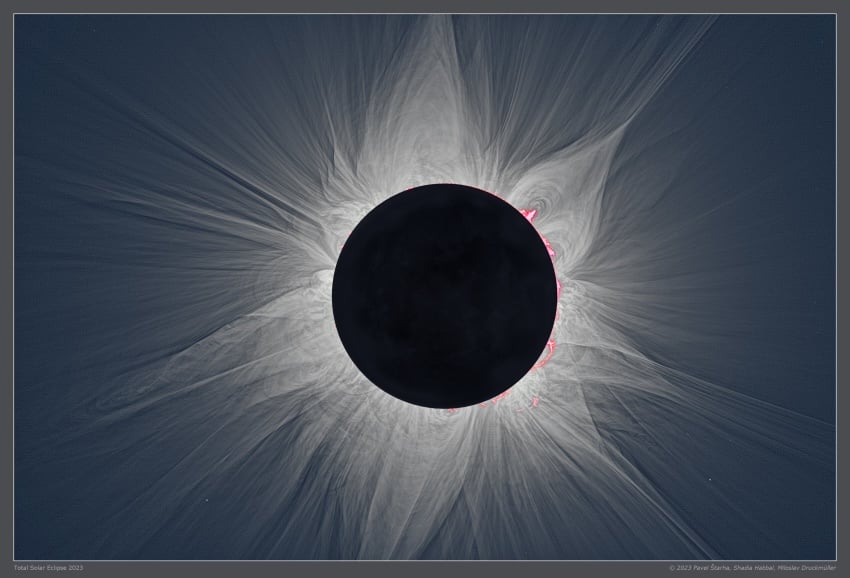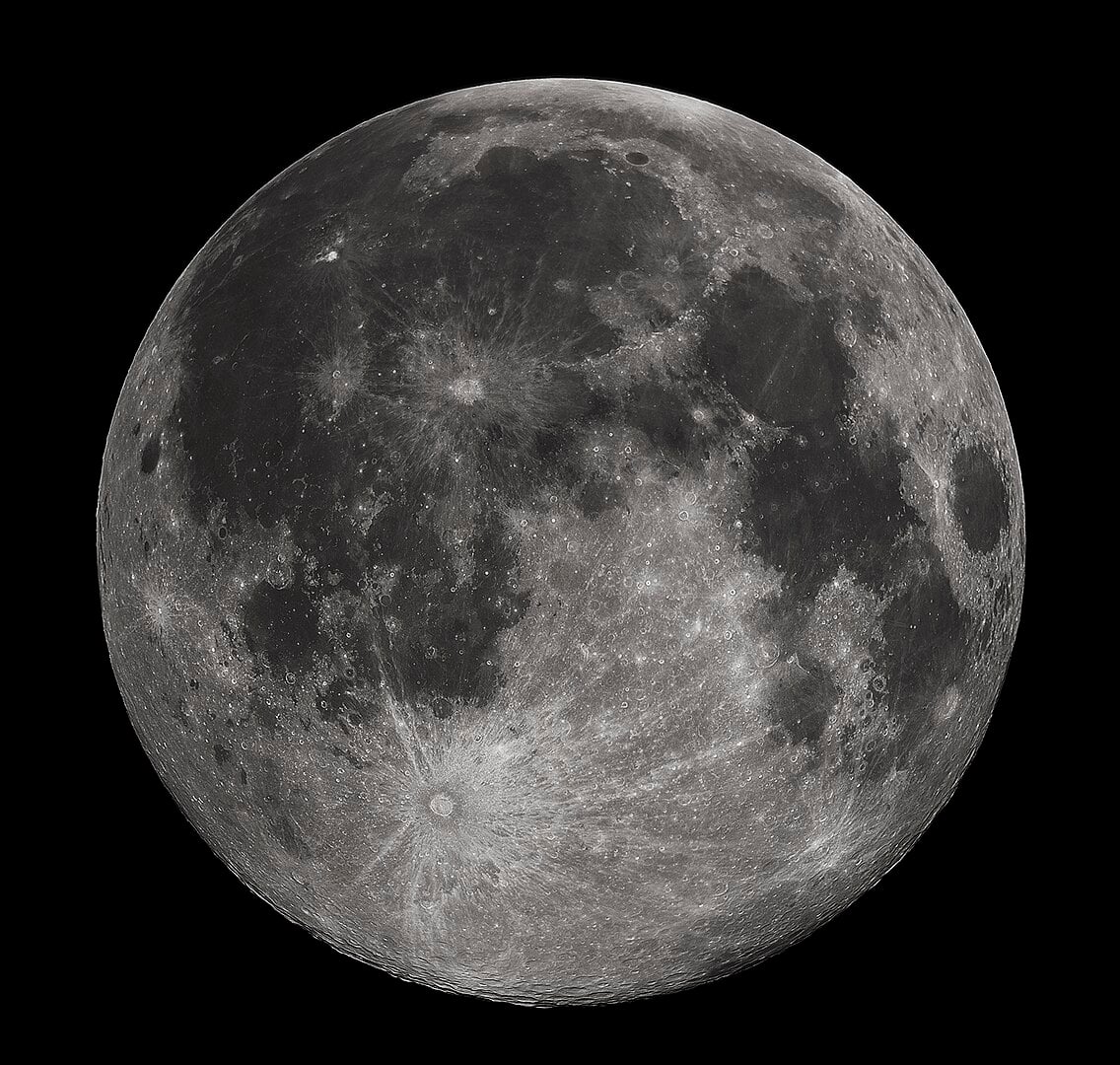0 Commentaires
0 Parts
1 Vue

Annuaire
Elevate your Sngine platform to new levels with plugins from YubNub Digital Media!
-
Connectez-vous pour aimer, partager et commenter!
-
 YUBNUB.NEWSMichelle Obama and Julia Louis Dreyfus Talk About All the Barriers They Face as WomenMichelle Obama, who's never seen with her husband Barack Obama, has managed to become more and more unlikable, playing the victim while jetting between her mansions. She really lost us when she said that0 Commentaires 0 Parts 1 Vue
YUBNUB.NEWSMichelle Obama and Julia Louis Dreyfus Talk About All the Barriers They Face as WomenMichelle Obama, who's never seen with her husband Barack Obama, has managed to become more and more unlikable, playing the victim while jetting between her mansions. She really lost us when she said that0 Commentaires 0 Parts 1 Vue -
 WWW.UNIVERSETODAY.COMA Small Satellite Could See a Perfect Solar Eclipse Every MonthWhy wait for rare solar eclipses? ESA's Proba mission can now create an artificial solar eclipse once a day. Now, a UK-led mission could do the same trick, but using the Moon's shadow to provide a 48-minute total eclipse once every lunar orbit (29.6 days). Named the Moon-Enabled Sun Occultation Mission (MESOM), the small spacecraft would align its orbit with the Moon, blocking the Sun perfectly, allowing observations of the solar atmosphere.0 Commentaires 0 Parts 4 Vue
WWW.UNIVERSETODAY.COMA Small Satellite Could See a Perfect Solar Eclipse Every MonthWhy wait for rare solar eclipses? ESA's Proba mission can now create an artificial solar eclipse once a day. Now, a UK-led mission could do the same trick, but using the Moon's shadow to provide a 48-minute total eclipse once every lunar orbit (29.6 days). Named the Moon-Enabled Sun Occultation Mission (MESOM), the small spacecraft would align its orbit with the Moon, blocking the Sun perfectly, allowing observations of the solar atmosphere.0 Commentaires 0 Parts 4 Vue -
 WWW.UNIVERSETODAY.COMAncient Moon Rock Reveals Missing Chapter in Lunar HistoryA 2.35 billion year old rock that fell from the sky in Africa is rewriting our understanding of the Moon's past. This ancient meteorite, blasted off the lunar surface has revealed that our closest neighbor remained volcanically active for nearly a billion years longer than scientists previously knew. With its unique chemical fingerprint pointing to deep lunar origins, this rare space rock proves that sometimes the most extraordinary discoveries don't require billion dollar missions, they literally drop into our laps, carrying secrets from space.0 Commentaires 0 Parts 4 Vue
WWW.UNIVERSETODAY.COMAncient Moon Rock Reveals Missing Chapter in Lunar HistoryA 2.35 billion year old rock that fell from the sky in Africa is rewriting our understanding of the Moon's past. This ancient meteorite, blasted off the lunar surface has revealed that our closest neighbor remained volcanically active for nearly a billion years longer than scientists previously knew. With its unique chemical fingerprint pointing to deep lunar origins, this rare space rock proves that sometimes the most extraordinary discoveries don't require billion dollar missions, they literally drop into our laps, carrying secrets from space.0 Commentaires 0 Parts 4 Vue -
 WWW.THEHISTORYBLOG.COMTomb of Maya citys first king discoveredArchaeologists have unearthed the tomb of Te Kab Chaak, the first king of the Maya city-state of Caracol in Belize and founder of its royal dynasty. Dating to 350 A.D., it is the first identifiable rulers tomb ever found in Caracol.Te Kab Chaak (Mayan for Tree Branch Rain God) ascended the throne in 331 A.D. and ruled for 19 years before his death. The skeletal remains found in the tomb belong to a man about 57 tall and missing all of his teeth, likely due to his advanced age. His tomb was furnished with rich grave goods, including carved bone tube beads, three pairs of jadeite ear flares (rare even when its a single set is found), jadeite beads carved in the shape of spider monkeys, Pacific spondylus shells and other organic materials. Among the grave goods were 11 ceramic vessels, many of them polychrome and all of them finely crafted. The polychrome vessels are vividly painted on the sides and lids. One example is a basal flange bowl with a coatimundi head as the handle. The side of the bowl is painted with two bound prisoners. The lid has a worn but identifiable portrait of Ek Chuah, the Maya god of trade, whose iconography is not typically found in Early Classic period art. Another vessel portrayed a Maya king holding a spear while receiving offerings.The most exceptional artifact in the tomb is a jadeite mosaic death mask. They are extremely rare at Maya sites, indicators that the deceased was someone of great importance. This is confirmed by the interior of the tomb which is coated in cinnabar, symbolizing the rising sun in the east, an element only found in the tombs of the highest royalty.Archaeologists Diane and Arlen Chase have been excavating Caracol since 1985. They uncovered the administrative center and royal palace that soared 141 feet high over the city in the Late Classic period (600-700 A.D.). They named it Caana, Maya for Sky Palace. Artifacts and hieroglyphs found over the years of excavations showed Caracol dominated the southern Yucatan Peninsula from 560 until 680 A.D.In 2025, the archaeological team focused on the Northeast Acropolis plaza adjacent to Caana under the jungle canopy.Their investigations at Caracols Northeast Acropolis show that Te Kab Chaaks tomb was the first of three major burials dating to about 350 AD, a time of early contact with the central Mexican city of Teotihuacan, some 1200 kilometers distant. By 300 AD, Teotihuacan was a huge city that traded throughout Central America. []Maya carved stone monuments, hieroglyphic dates, iconography, and archaeological data all suggest that widespread pan-Mesoamerican connections occurred after an event in 378 AD referred to as entrada, said Diane Chase.Whether this event represented actual Teotihuacanos in the Maya area or Maya using central Mexican symbols is still debated. The Caracol archaeological data suggests that the situation was far more complicated, she said.A cremation placed in the center of Caracols Northeast Acropolis plaza, recovered in 2010 and placed after Te Kaab Chaaks burial has been dated to AD 350 by radiocarbon analysis and included artifacts from central Mexico. It contained the remains of three individuals, as well as two large knives, six atlatl points, and fifteen pristine blades of green obsidian from Pachuca, Mexico (north of Teotihuacan); several pottery vessels also likely came from central Mexico. Additionally, a carved atlatl projectile tip, atypical for the Maya but typical for a Teotihuacan warrior, was included in the cremation.The cremation itself and its placement in the center of a residential plaza are also more typical practices for a high-status Teotihuacano and do not accord with standard Maya burial practices. Based on other ceramics in this cremation, the main individual was likely a Caracol royal family member that had adopted central Mexican ritual practices. This individual may even have served as a royal Maya envoy who had lived at Teotihuacan and returned to Caracol. []The three burials interred in the Caracol Northeast Acropolis all cluster at AD 350, at least a generation before the previously recognized Teotihuacan presence in the Maya area. They demonstrate that early Maya rulers were fully enmeshed in Mesoamerican-wide contacts prior to the Teotihuacan entrada recorded on Maya monument[s].0 Commentaires 0 Parts 7 Vue
WWW.THEHISTORYBLOG.COMTomb of Maya citys first king discoveredArchaeologists have unearthed the tomb of Te Kab Chaak, the first king of the Maya city-state of Caracol in Belize and founder of its royal dynasty. Dating to 350 A.D., it is the first identifiable rulers tomb ever found in Caracol.Te Kab Chaak (Mayan for Tree Branch Rain God) ascended the throne in 331 A.D. and ruled for 19 years before his death. The skeletal remains found in the tomb belong to a man about 57 tall and missing all of his teeth, likely due to his advanced age. His tomb was furnished with rich grave goods, including carved bone tube beads, three pairs of jadeite ear flares (rare even when its a single set is found), jadeite beads carved in the shape of spider monkeys, Pacific spondylus shells and other organic materials. Among the grave goods were 11 ceramic vessels, many of them polychrome and all of them finely crafted. The polychrome vessels are vividly painted on the sides and lids. One example is a basal flange bowl with a coatimundi head as the handle. The side of the bowl is painted with two bound prisoners. The lid has a worn but identifiable portrait of Ek Chuah, the Maya god of trade, whose iconography is not typically found in Early Classic period art. Another vessel portrayed a Maya king holding a spear while receiving offerings.The most exceptional artifact in the tomb is a jadeite mosaic death mask. They are extremely rare at Maya sites, indicators that the deceased was someone of great importance. This is confirmed by the interior of the tomb which is coated in cinnabar, symbolizing the rising sun in the east, an element only found in the tombs of the highest royalty.Archaeologists Diane and Arlen Chase have been excavating Caracol since 1985. They uncovered the administrative center and royal palace that soared 141 feet high over the city in the Late Classic period (600-700 A.D.). They named it Caana, Maya for Sky Palace. Artifacts and hieroglyphs found over the years of excavations showed Caracol dominated the southern Yucatan Peninsula from 560 until 680 A.D.In 2025, the archaeological team focused on the Northeast Acropolis plaza adjacent to Caana under the jungle canopy.Their investigations at Caracols Northeast Acropolis show that Te Kab Chaaks tomb was the first of three major burials dating to about 350 AD, a time of early contact with the central Mexican city of Teotihuacan, some 1200 kilometers distant. By 300 AD, Teotihuacan was a huge city that traded throughout Central America. []Maya carved stone monuments, hieroglyphic dates, iconography, and archaeological data all suggest that widespread pan-Mesoamerican connections occurred after an event in 378 AD referred to as entrada, said Diane Chase.Whether this event represented actual Teotihuacanos in the Maya area or Maya using central Mexican symbols is still debated. The Caracol archaeological data suggests that the situation was far more complicated, she said.A cremation placed in the center of Caracols Northeast Acropolis plaza, recovered in 2010 and placed after Te Kaab Chaaks burial has been dated to AD 350 by radiocarbon analysis and included artifacts from central Mexico. It contained the remains of three individuals, as well as two large knives, six atlatl points, and fifteen pristine blades of green obsidian from Pachuca, Mexico (north of Teotihuacan); several pottery vessels also likely came from central Mexico. Additionally, a carved atlatl projectile tip, atypical for the Maya but typical for a Teotihuacan warrior, was included in the cremation.The cremation itself and its placement in the center of a residential plaza are also more typical practices for a high-status Teotihuacano and do not accord with standard Maya burial practices. Based on other ceramics in this cremation, the main individual was likely a Caracol royal family member that had adopted central Mexican ritual practices. This individual may even have served as a royal Maya envoy who had lived at Teotihuacan and returned to Caracol. []The three burials interred in the Caracol Northeast Acropolis all cluster at AD 350, at least a generation before the previously recognized Teotihuacan presence in the Maya area. They demonstrate that early Maya rulers were fully enmeshed in Mesoamerican-wide contacts prior to the Teotihuacan entrada recorded on Maya monument[s].0 Commentaires 0 Parts 7 Vue -
-
-
-
-








